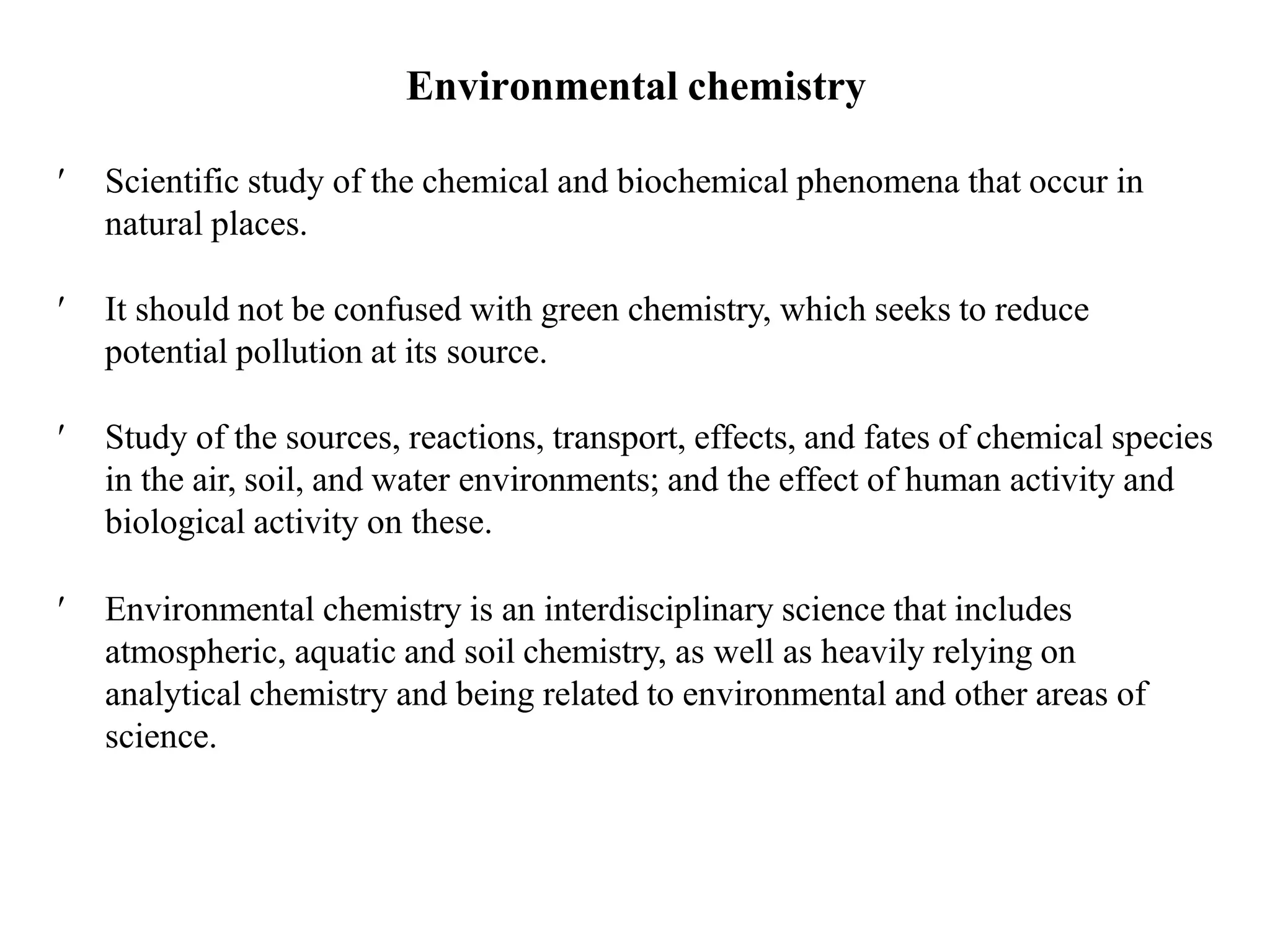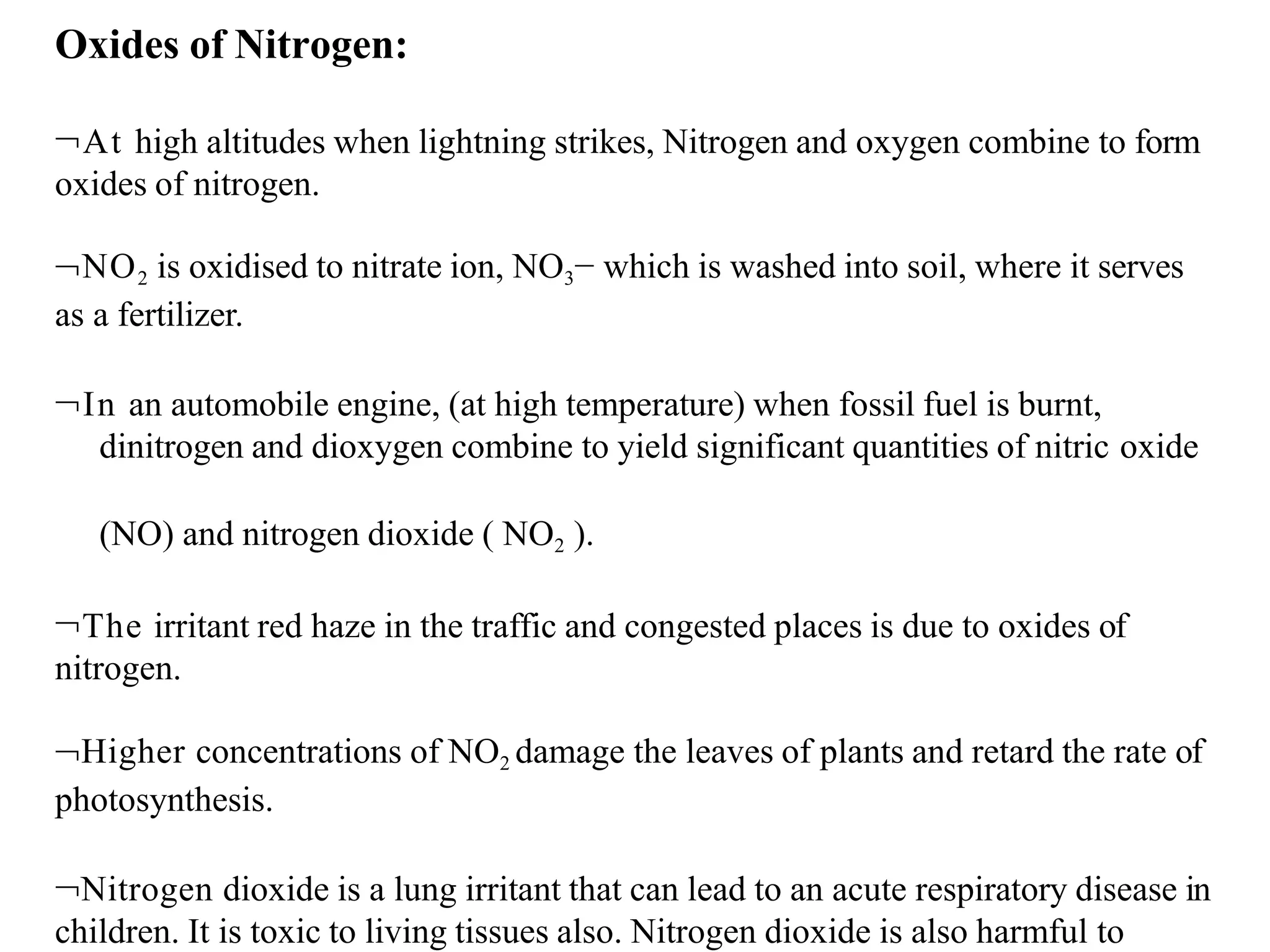The document discusses environmental chemistry, focusing on the study of chemical phenomena in natural environments and the effects of pollution from human activities. It highlights various pollutants, their sources, and the harmful impacts on air, water, and soil, as well as topics such as the greenhouse effect, acid rain, and ozone depletion. The document concludes by emphasizing the need for action to address environmental pollution caused by human activities.






















